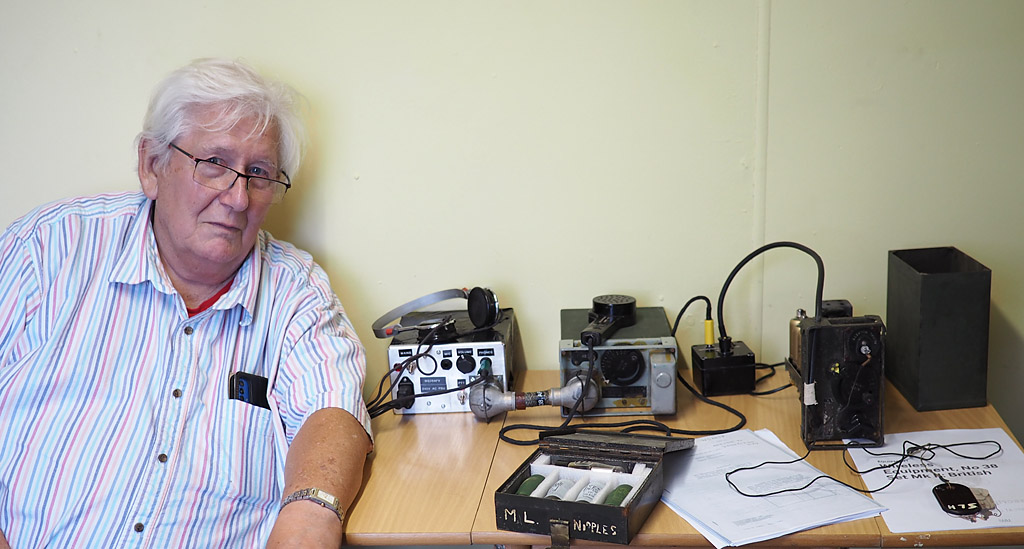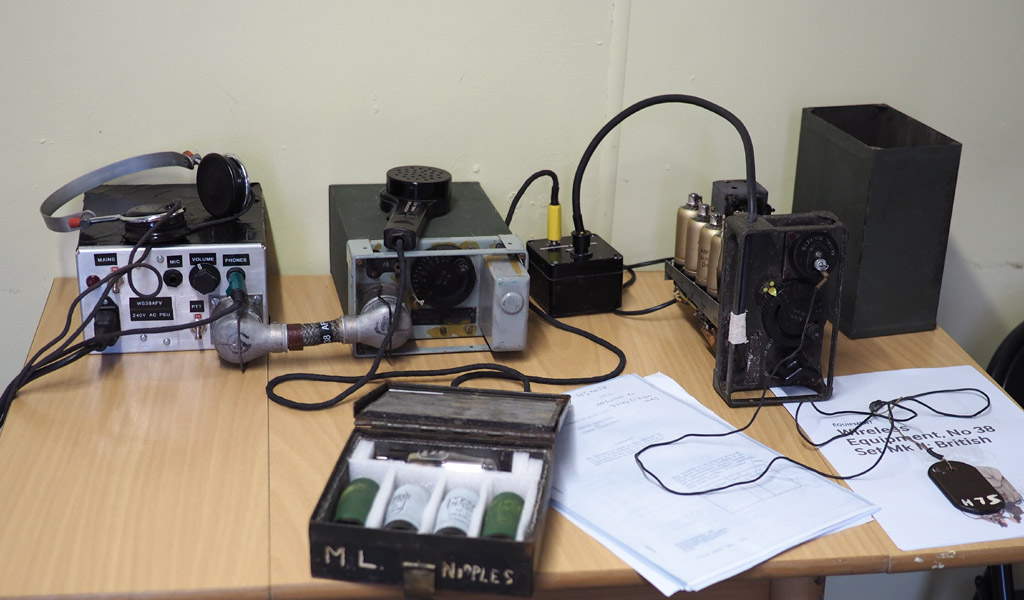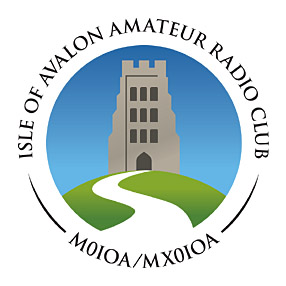Wireless Set WS38 from the Second World War
Amateur radio covers a variety of interests, more so nowadays since technology lets you do more, often with less. Club members have been into digital voice, hillwalking to get more height, data transmission with FLDigi and images from space.
This is a heritage piece from your great-grandfather’s era, a World War 2 WS38 wireless set, as they were called in those days.
I bought a couple of these World War 2 sets in an auction; one is a manpack unit and the other is the same thing but in a tank mounted format. These are AM sets, frequency coverage was 7.3 to 9 MHz, and it had a range of up to 4 miles. Output was low by modern standards, about ¼ watts. These show the rigours of use, the Imperial War museum has a pristine version on display.

Made by Murphy Radio in the UK, it is a superhet with a 285kHz IF using five pentode valves. PA3ESY has a page on the WS38 in Dutch with the technical description in English at the end. The receive local oscillator serves as the transmit oscillator which is amplified by a grid-modulated PA stage.
This is a military radio, but the operating range is close to the 40m band so it can be used on that band with some modification to the tuning. It is designed for AM radiotelephony, which needed less training than Morse, but at the cost of usable range for a given power.

In the UK 7.143MHz is an AM centre of activity 1, which is only 200kHz below the lower edge of the nominal specification of this rig.

The WS38 has a bad rap from the communications failures in Operation Market Garden to take the Arnhem bridge in Holland. The 1977 movie “A Bridge Too Far” charges poor radio communications as a significant part of the cause for the failure here, but the 2006 British Army report2 indicates the limitations of the radio communications were known, and other factors were more significant, in particular that there was a larger enemy presence in the region than anticipated. Air dropping valve gear was always going to be a fraught operation, and expecting a VFO tuned rig covering 7-9 MHz to stay on the net frequency after an airdrop was perhaps a push.

HF was always going to be a tough ask in the battlefield - the set came with a 4ft and a 12ft rod aerial which extended verticalls, which is unwise then the enemy is looking to get a shot, so staying alive tended to take precedence over optimising antenna range. A Baofeng UV5R would have the edge and VHF antennas are smaller, but these were not to be made for another 80 years.

-
Radcom v99 #8, August 2023, AM revisited, John Petters G3YPZ p74 ↩
-
Major John W. Greenacre British Army (2004) Assessing the Reasons for Failure: 1st British Airborne Division Signal Communications during Operation ‘Market Garden’, Defence Studies, 4:3, 283-308, DOI: 10.1080/1470243042000344777 ↩
